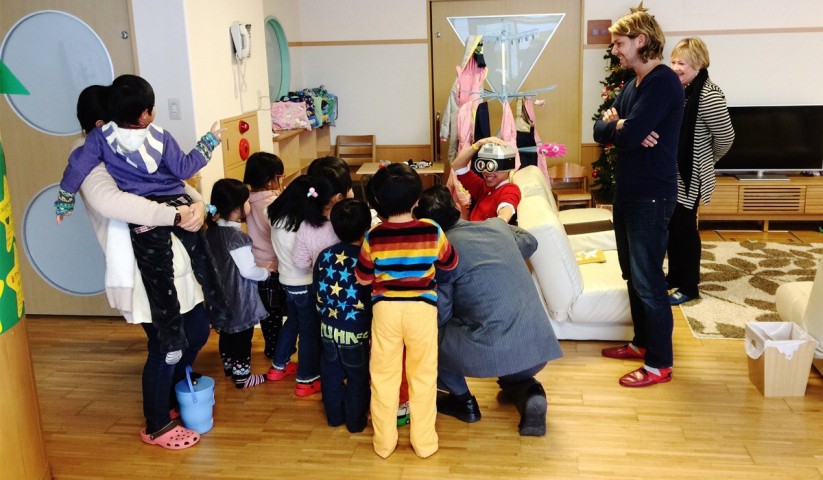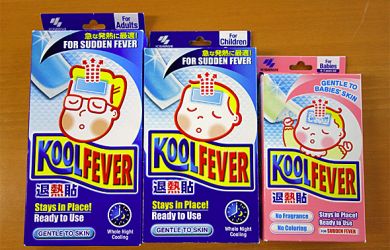
October 16, 2016
Therapy Through Technology
Living Dreams sparks a light for Japan’s ignored orphans
International adoption is in decline, even as the number of orphans relentlessly goes up. Of the 150 million children orphaned worldwide, only 250,000 get adopted every year. India, China, Uganda, Haiti, and Ukraine are the countries most commonly thought of as having many of children in need, and for intercontinental policies that facilitate adoptions.
But children are subject to abuse and neglect in developed countries as well, where deplorable social issues such as child maltreatment are systematically disregarded. In Japan, orphans frequently go unacknowledged or experience stigma.
Living Dreams has been active in improving the quality of life for Japan’s orphaned children.
“In Japan, orphans living in institutions are almost 40,000, scattered over 600 children’s homes around the country,” says Michael Clemons, director of partnerships for Living Dreams, an NPO founded in 2001. The group focuses on using technology to better conditions in children’s homes. “In the past, the two World Wars were the primary causes, but now it’s because of abuse … the majority of these kids would be dead if they were still at home.”
With Living Dreams, Clemons supports institutionalized children by allowing them to learn through hi-tech devices. “Thirty-five percent of orphans are on average two years behind their peers, owing to the psychological scars they carry, and only 12 to 16 percent of them go to university. By exposing our kids to 21st-century learning and by training them to profitably use technology, we aim at improving both these numbers.”
“At Living Dreams, we try to raise the awareness [within] the kids first, getting them to think of what they want to become, making them understand that university is an option for them, too,” Clemons explains. He adds that the children are made to take attitudinal tests to define their interests, after which they are paired with mentors. He says providing kids with more options will help them realize they have potential and worth.
Furthermore, Living Dreams sets out to hire orphans as staff once they turn 18, so that they will have a roof over their heads in a shared house and a job as trainers at the organization. “It’s an evolving, technical job that could look into a number of directions. We invest in these kids so that they can focus on the challenges of the country.”
One of Living Dreams’ projects is “Obaachan in the Cloud,” wherein children write down questions in digital surveys that are then sent to senior citizens. It gives elders who may not feel their opinions are wanted, a chance to Skype into the children’s homes to answer the questions and share their experience and advice.
“Creating such connection between the children and the elderly is beneficial for both the kids who don’t have grandparents, and the old who feel nobody cares about what they think any longer.”
But it’s still a long road to improving conditions of life in children’s homes. According to a recent Human Rights Watch report, only a fraction of the orphans are successfully placed in foster care. The report urged Japan to reverse the trend in favor of foster families over institutions. Clemons, however, believes this isn’t the right way to tackle the problem in the country.
“Kids who aren’t lucky enough to find a family to keep them are rejected, and that rejection compounds on itself over and over … and they end up not caring at all. If you are in an environment where you’re safe and taken care of … [that’s] a better solution,” he says.
Living Dreams works with children aged two to 18 years old. At the homes, they are divided into “family pots”—units of seven or eight kids living together, with an appointed teacher and counselor. The children function as a family unit, cooking their food, washing dishes, and doing homework in their rooms.
“Orphans here are considered ‘thrown-away children’,” says Clemons, addressing a traditional phenomenon, rooted in Confucianism, that is still ongoing. “People begin with the misconception that these children have tainted blood. No matter the circumstances they grow up in, something is believed to be genetically wrong with them. If their parents are criminals, the baby will grow up to be one [too].”
The stigma around the lack of a family follows children into adulthood, sometimes preventing them from obtaining jobs, renting apartments, and even getting married. The severity of the shame creates a general preference for children to stay in abusive households than enter an orphanage. As for adoptions, Clemons asserts that it is a foreign concept in Japan, which explains the dramatically low number of adoptions here. Furthermore, given that couples already face difficulties with adoption, single parents and same-sex couples have it worse.
“Many parents do show up once or twice a year, and the child knows who the mom is, but the bond with her is gone. Despite this … the government deters biological parents from severing family ties, as bloodline in Japan is seen as divine. These children therefore live in a limbo.”
Living Dreams is seeking dedicated volunteers to help the organization provide the children with mentors on the long-term. “There is a need for mentors, from English teachers to … professionals who can share their skills with our kids, either in person or on Skype.”
While there are still hurdles for children’s homes in Japan to overcome, Living Dreams shows that improvements are being made and that there is hope.





